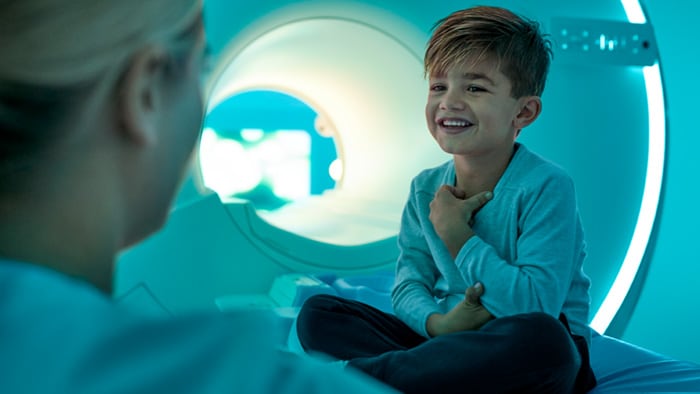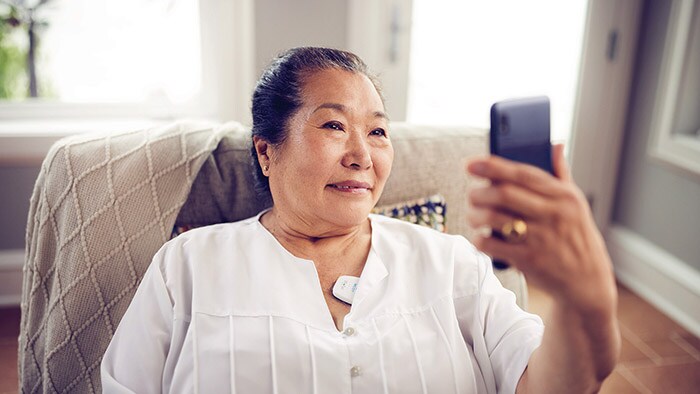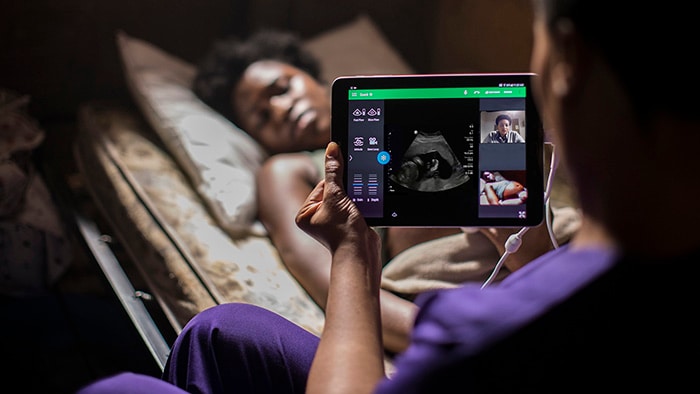Within weeks of COVID-19 arriving in the US, its epicenter became New York City. Local authorities together with a federal emergency agency worked around the clock to set up 1,000 temporary intensive care (ICU) beds in the city’s largest convention center. But then the virus spread to other parts of the United States. In the first four days of July alone, 15 states saw record increases in new COVID-19 cases. Florida has now surpassed New York's previous highest single-day total, with 11,434 new cases in one day. Although there is no other country outnumbering the US coronavirus case numbers, similar patterns emerged in other countries around the world, and each time healthcare authorities had to scramble to set up more beds, source the ventilators, and ensure that they could be monitored by frontline staff. The speed and intensity of this coronavirus has challenged us to reflect on what the hospital of the future will look like. We’ve realized that it has accelerated three profound trends that existed before the pandemic, which are dramatically reshaping healthcare. These trends are the concept of a networked healthcare system, the acceleration of telehealth and virtual care and guidance, and the increase in consumer engagement in our own health and that of our families.
The hospital of the future is a network with flexible capacity, connected by a single digital infrastructure: critically ill patients are cared for in (remotely supported) ICUs; regular care takes place in connected health hubs in the community; while the at-risk patient population is monitored remotely and more engaged with their health than ever before.
Jeroen Tas
Chief Innovation & Strategy Officer, Philips

Virtual care joins the network together
Instead of being one fixed location, the hospital of the future is a network which is more scalable and modular than ever before. It’s flexible enough to deliver highly complex care to large numbers of new patients in ever-changing locations, while continuing to provide regular and elective care to the rest of the population. Virtual care and guidance play a critical role in this network. We’ve already seen how remotely guided ICUs are helping hospitals to scale care during the crisis taking the load off frontline staff. In the near future, these tele-ICUs within larger hospitals will be connected to mobile facilities and community-based hubs by a single digital infrastructure. Staff in centralized care coordination centers will support the patient flow and manage resources remotely to remove bottlenecks in the network, by sending clinicians, ICU beds or other medical equipment to where they’re most needed, 24/7. If COVID-19 breaks out in a new city, healthcare authorities could deploy a mini hospital in a mobile room such as a shipping container. This could be an ICU to care for critically ill patients (such as recently introduced in India) of COVID-19 and/or rooms with a CT scanner or an MRI or mammography machine to diagnose patients with non-COVID related illnesses. The networked hospital will also help to ensure that patients receive the same level of care and expertise, regardless of where they live. Cloud-based IT solutions already capture and analyze the latest data and research from hospitals around the world – large or small – to gain insights into COVID-19, as well as the complexities of co-morbidities and the efficacy of protocols. Leading providers are applying analytics and artificial intelligence (AI) to support a patient’s multidisciplinary team in making the best treatment decisions for that individual. Think of it like the GPS system in your car, delivering real-time updates to help you find the quickest way home. Improving the staff experience is crucial, specifically in moments of stress. Before the pandemic, it formed one of the four goals of the quadruple aim alongside improving patient experiences, lowering the cost of care, and improving clinical outcomes. One of the main challenges among medical staff is burnout, which has only intensified since the end of 2019. Healthcare professionals are working longer and harder than ever, spending more time on administrative processes and searching for equipment, rather than patients. They are now also putting their own lives at risk. And although cutting edge technology can be a huge help in dealing with a new virus, sometimes something much simpler is needed.
Care could even come right to your doorstep. If you’re elderly or frail, a nurse could drive a mobile healthcare vehicle to your home. Once there, he or she could examine you in person and take advice from a doctor via a video session. At Philips, we’re testing this concept with three mobile units in the Japanese city of Ina, where there’s a rapidly aging population and a shortage of medical facilities and healthcare staff.
Sean Carney
Chief Experience Design Officer, Philips
For example, nurses play a vital role in helping a patient to feel safe and cared for because they often spend more time than other clinicians at the bedside, dealing with the emotions that come with disease. But one study shows that a nurse can spend up to 40% (1) of his or her day simply looking for equipment. In the hospital of the future, it is critical that clinicians spend as much time as possible with their patients. This is why at Philips we’re already making sure that during the pandemic, vital items like ventilators are tagged and can be found using a simple app by anyone who needs them, from nurses to surgeons to department heads. We are working in the background to make sure that capacity and skills are available to those patients with the highest needs.
In the networked hospital, care comes to you
With some countries experiencing a second wave of the virus, healthcare authorities also need to find increasingly innovative ways to care for non-COVID-19 patients without risking infection. We’re seeing large drops in cancer diagnosis and elective surgery for cardiovascular diseases as resources are diverted to manage the outbreak and as patients avoid larger hospitals. One way hospital CEOs could address this is by enabling day surgery to take place in other locations. For example, it could soon be possible for a patient to have a stent operation in a mobile cath lab in a retail mall closer to home. For those of us who live in rural locations, the networked hospital will improve access to care too. Approximately one third of veterans live in rural areas, just like Ron Glasgow, who has to drive 70 miles across Montana to see his doctor, and then 70 miles back again. Philips is currently piloting a mobile solution in 10 rural access points at the halls of American Legion and Veterans of Foreign Wars for Veterans to conduct telehealth sessions with providers. Care could even come right to your doorstep. If you’re elderly or frail, a nurse could drive a mobile healthcare vehicle to your home. Once there, he or she could examine you in person and take advice from a doctor via a video session. At Philips, we’re testing this concept with three mobile units – in collaboration with MONET Technologies – in the Japanese city of Ina, where there’s a rapidly aging population and a shortage of medical facilities and healthcare staff.
This pandemic has made us all more aware of our health than ever before. We will all take a more active role in staying healthy.
Jeroen Tas
Chief Innovation & Strategy Officer, Philips
We will all take a more active role in staying healthy
On the first day of lockdown in the UK, more than one million people joined a YouTube live workout for kids by a man called Joe Wicks. He said he’d been trying, and mostly failing, to get the nation to do more exercise for years. Then he achieved his goal overnight. By early June, his hugely popular daily workouts had raised £500 million, which he donated to the UK’s National Health Service. Joe’s example illustrates how this pandemic has made us all more aware of our health than ever before. It’s now clear that the healthier we are the more chance we have of recovering from COVID-19, or of having mild symptoms. But what is it that stops some of us from exercising, or from eating the healthier food on a regular basis? In the near future, gamification and AI may take a greater role in helping us to figure out these behavioural aspects of health. One way we could do this is by enabling the connected devices in our home to interact in a way that lets them build a holistic profile of us over time, and that brings in more experiential parts of our lives. A smart mirror, a toothbrush, sleep monitor and a set of connected weight scales might be able to spot the early indicators of COVID-19, or diabetes, or even detect changes in our mood to indicate stress. This might help our GPs to gain more insight into both our physical and mental health and then provide clinical and behavioural guidance and even empathy from afar. For those of us who live with chronic diseases or who may have even recently been discharged from hospital care, biometric sensors can already continuously relay vital signs such as our heart rate and respiratory rate back to algorithms that will notify care teams, in case of deterioration. This means hospitals can start to predict when we might need help, as well as where and when they will need extra beds, equipment or staff.
We also all tend to feel calmer and recover faster in the home than in a hospital setting, which can help to give more reliable readouts of our vitals, as well as keep us happier and healthier.
Sean Carney
Chief Experience Design Officer, Philips
As a general rule, we also all tend to feel calmer and recover faster in the home than in a hospital setting, which can help to give more reliable readouts of our vitals, as well as keep us happier and healthier.
The hospital of the future isn’t going to happen in 2030 …. it’s happening now
Particularly as we find ourselves living through a global pandemic, we’ve realized that a networked healthcare system, supporting health hubs in the community and patients at home, is needed now more than ever. The networked hospital will support care that is more personal, more accessible, and more dynamic to address the health needs that have evolved rapidly with the spread of COVID. At Philips, we know that we cannot bring this vision to life on our own. It is absolutely vital that we co-create with you, patients, clinicians and stakeholders and apply design and platform thinking to patient pathways, flow and clinical settings.
Share on social media
Topics
Author

Jeroen Tas
Chief Innovation & Strategy Officer Jeroen is an experienced global executive and entrepreneur with a track record of leading innovation in the healthcare, information technology and financial services industries. Leading the company’s global Innovation & Strategy organization, he’s responsible for creating a pipeline of innovative business propositions that address emerging customer needs and enable a high-growth, profitable health continuum strategy.
Follow me on

Sean Carney
Former Chief Experience Design Officer at Royal Philips from 2011 to 2022












